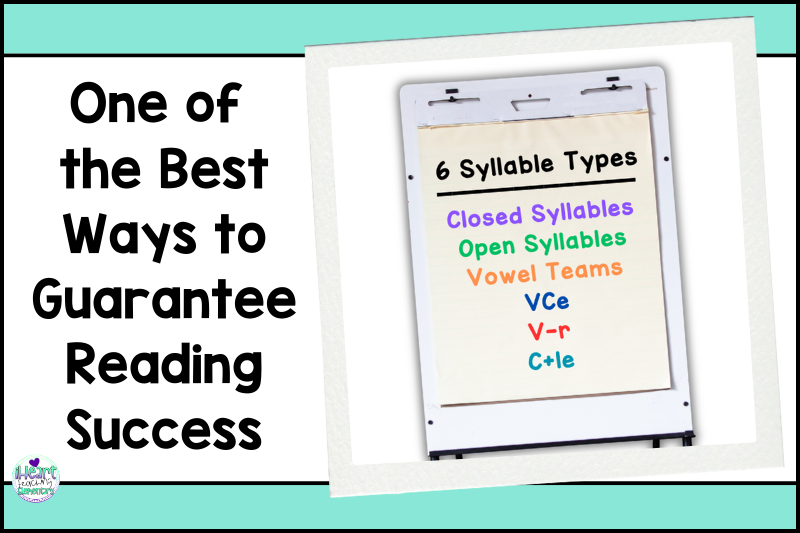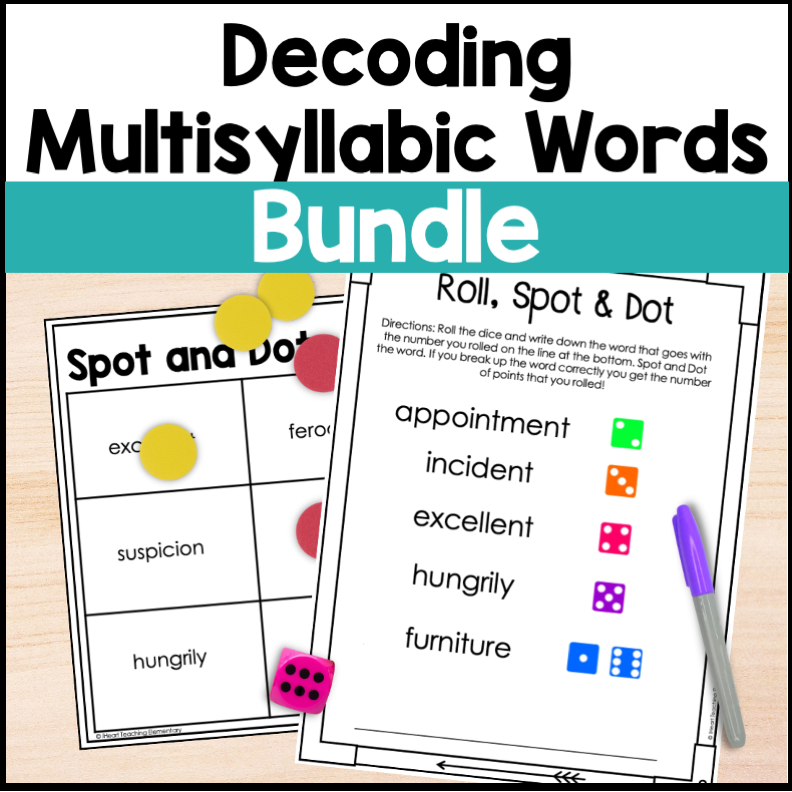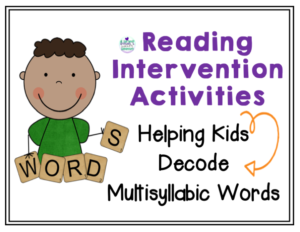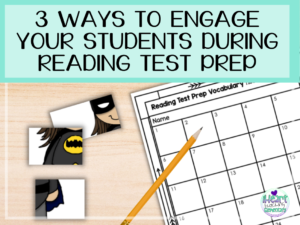Knowing how to decode multisyllabic words is essential for kids that are reading longer texts. A big part of reading multisyllabic words is knowing and understanding syllable types.
I’ve found a lot of success teaching them, each as its own mini-lesson during the first weeks of school.
I’m going to go through each of the 6 syllable types that are essential for kids to know and understand so they can decode multisyllabic words.
Closed Syllables
A closed syllable has a short vowel letter that is closed by a consonant. Usually, the vowel sound makes a short sound.
For example, the word cap is a closed syllable because the consonant p closes off the vowel a which makes a short sound.
Let’s look at a closed syllable in a multisyllabic word. The word magnet has two closed syllables:
mag– first syllable and ends with a consonant
net– second syllable and ends with a consonant
Both vowels make short sounds.
Open Syllables
An open syllable is a syllable that ends with a vowel. The vowel usually makes a long sound.
For example, the first syllable of the word tiger is an open syllable. Ti- is the first syllable and ends with a vowel. We’ll talk about the second syllable later.
Another example of an open syllable in a multisyllabic word is pi- in the word pilot. The word ends with a vowel and makes a long sound.

VCe or Silent e Syllables
VCe syllables have a vowel followed by a consonant and then e. The e is usually silent.
For example in the word hope, the e is silent and the o has a long vowel sound.
In a multisyllabic word like compete, the last e is silent and the first e has a long sound. The reason the o doesn’t make a long sound is because the o is in a separate syllable which is closed: com/pete
Vowel Team Syllables
A vowel team is made up of two, three, or four letters that make one vowel sound.
In the word steam, the vowels ea are a vowel team. In the word caught, the letters augh are a vowel team that makes the /aw/ sound.
A note about y: y is considered a vowel when it forms a diphthong. A diphthong is two vowels joined in one syllable to form one sound like in the word play.
Have you heard the expression “the first vowel does the talking and the second one does the walking”?
This is how I learned it as a kid but it doesn’t apply to all vowel teams so teaching it this way is confusing for kids. It’s important that we no longer use that term with kids.
Instead, allow kids that struggle with vowel teams to have repeated practice. This will help them remember them and be able to identify them in multisyllabic words.

Consonant+le Syllables
The syllable consonant +le is only found in multisyllabic words and is always at the end.
Here’s an easy way for kids to learn syllables with consonant +le: When there is a syllable that contains a consonant followed directly by le, the le grabs the consonant.
For example, in the word table, the le grabs the b and creates a syllable: ta/ble.
In the word shuffle, the le grabs the second f and creates a syllable: shuf/fle.
R Controlled Syllables
Sometimes r-controlled syllables are called Bossy r. Bossy r syllables are vowel letters that are followed by an r and are found in the same syllable. The letter r is bossy and controls the sound of the vowel.
For example in the word sharp, the r is being bossy and controls the sound of the a.
Another example is the word turtle. The r is bossy and controls the sound that u makes. So instead of a long or short sound, it makes a new sound that is overpowered by the r.
Odd Syllables
There are syllables that don’t fall under any of the 6 syllable types.
I tell kids that these syllables just don’t fit any of the other categories so they’re odd.
Some examples of odd syllables are tion, cious, and tient.
This is the last type of syllable I teach because they don’t have a set rule like the other six syllable types. I tell kids that we just need to remember that sometimes vowels or syllables don’t follow a rule and we have to remember the sounds they make.

For example, patient has an open syllable followed by an odd syllable: pa-tient.
I find it helpful to give students a list of these syllables when they’re learning to decode multisyllabic words. The first thing I have my students do is check for odd syllables in the word before decoding the rest of the word.
Teach or review syllable types before helping kids decode multisyllabic words. It will help even struggling readers to be successful.
🛒 SHOP THIS POST 🛒
Save this post for later on Pinterest!





